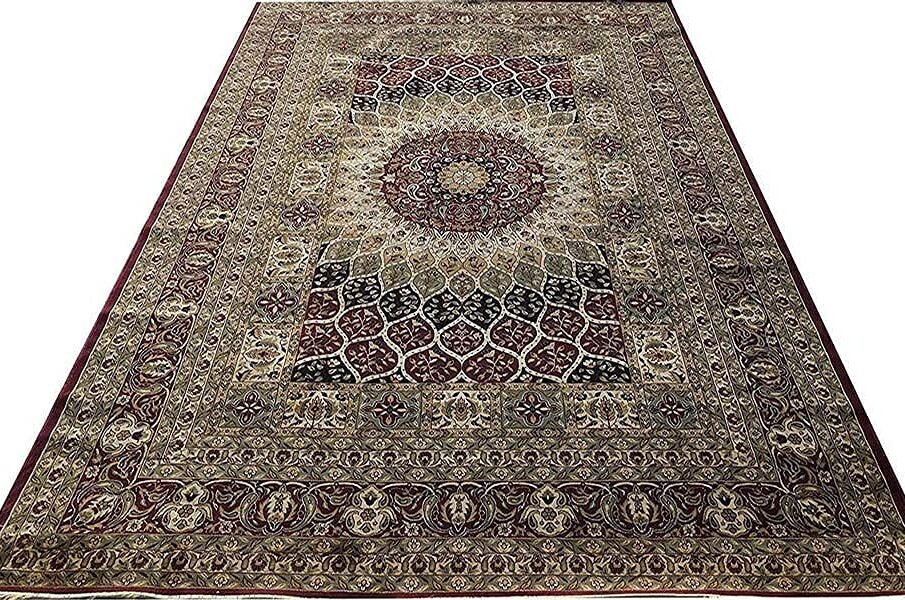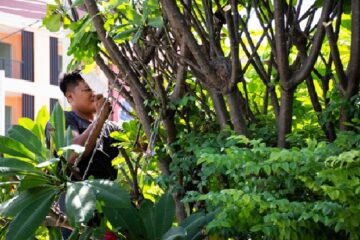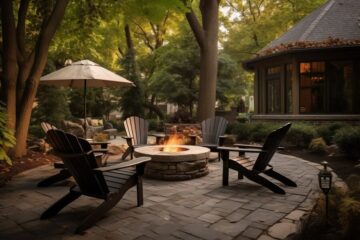What do you need to know about Persian carpets?

A Persian carpet, Persian rug, or Iranian carpet is a thick textile made in Iran for a wide range of practical and symbolic uses. It can be used at home, sold locally, or exported. Persian culture and Iranian art rely heavily on carpet weaving.
Types of Persian carpets
Bakhtiari
In Iran’s Zagros Mountains, antique Bakhtiari carpet were mostly made by local villagers and nomads. Bakhtiari rugs typically have a geometric, sometimes semi-geometric, and rarely curvilinear pattern. The designs are usually very dense, and bright colors like navy, deep reds, bright blues, greens, brown, and beige were often used. The garden Bakhtiari design is the most common, and it consists of square, rectangular, diamond, or hexagon compartments filled with floral designs like a vase, a bird perched on a branch, a cypress tree, a willow tree, or a grapevine. The colors and designs of each compartment differ from those of its neighbors.
Bakshayesh
Bakshayesh is a small village southwest of Heriz in the Iranian Azerbaijan region. The production of large rugs with either a Herati or central medallion pattern in the late 19th century is primarily what makes the region famous. Rugs frequently have geometric patterns that are reminiscent of traditional Heriz designs and methods. Ivory, light and dark pink, light and dark blue, and brownish red are the Bakshayesh rug weavers’ favorite colors. Typically, blue is used to create contrast.
Bijar
The majority of Bijar rugs are made in the town of Bijar and the villages that surround it. Bijar is in the Kurdistan province in the northwest of Iran. Most people think of Bijar rugs as village rugs because they are made in homes rather than workshops, whether they are made in the town of Bijar or the villages around it. Because so many different designs were utilized, bear carpets are typically identified by their weave rather than their design. Bijar weavers repeatedly pound the weft strands against the knot rows with a hammer until the weave becomes extremely compact. Consequently, Bijar rugs are extremely durable, heavy, and dense.
Farahan
Farahan is a village in west-central Iran, north of the city of Arak. It is famous for its late 19th-century rugs with intricate knots. Although some curvilinear rugs are also woven in the region, the majority of Farahan rugs have a geometric pattern. There are two main types of these high-quality rugs. The first type features motifs like the Herati or both designed in an all-over or endless-repeat pattern. The most common motive, Herati, has many variations, and both motives are typically woven into hexagonal panels.
Kashan-Mohtasham
Kashan carpets from the past are among the best Persian rugs. They are woven in Kashan, an Iranian city in the north-central region, in workshops. Kashan has produced some of the finest Persian silk rugs since the Safavid era when it was a center for silk production. Weavers also began producing wool rugs and carpets of high quality in the latter part of the 19th century, maintaining the Safavid era’s high standards of technique and design.
Mohtasham rugs are among the finest Kashan carpets. They are referred to as Kashan-Mohtasham rugs, and they typically feature a traditional navy medallion and a deep and rich color palette. However, all-over designs are uncommon but not unheard of.









